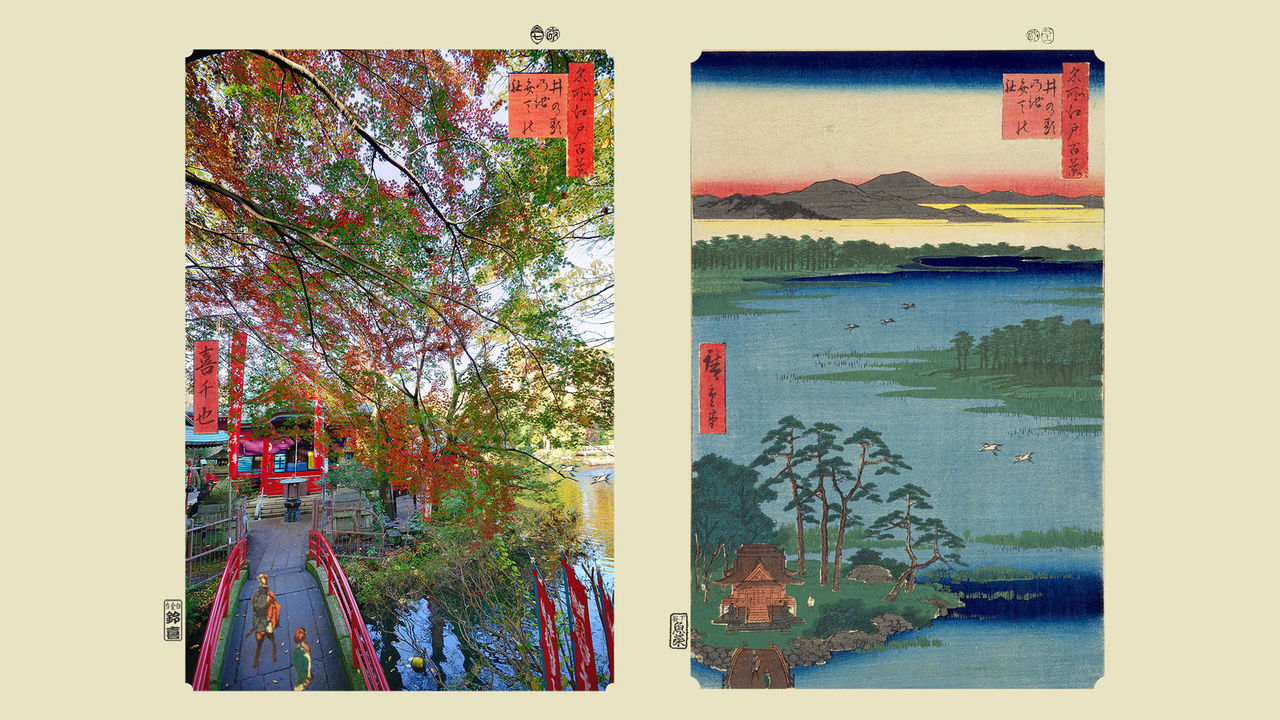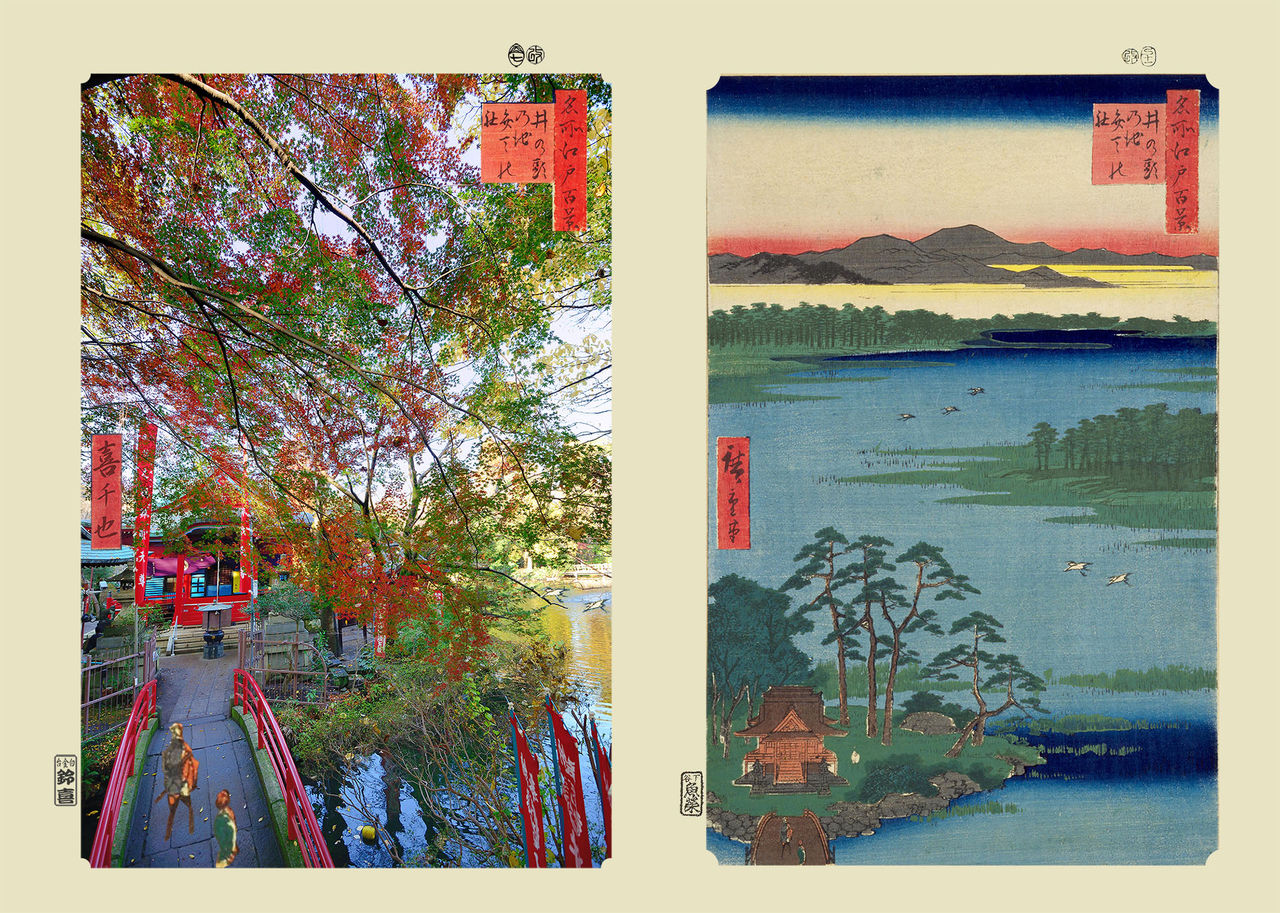
Tokyo’s Wild West: “Benten Shrine, Inokashira Pond”
Guideto Japan
- English
- 日本語
- 简体字
- 繁體字
- Français
- Español
- العربية
- Русский
One Hundred Famous Views of Edo by Kichiya, the Ukiyo Photographer: Today’s Tokyo Through Hiroshige’s Eyes
Meisho Edo hyakkei, known in the West as One Hundred Famous Views of Edo, was one of ukiyo-e artist Utagawa Hiroshige’s most celebrated works, influencing even Western artists like Van Gogh and Monet. Drawn in Hiroshige’s final years and published from 1856 to 1861, the series depicted the sights of Edo (as Tokyo was then known) through the changing seasons. Audiences around the world admired Hiroshige’s inventive use of bold compositions, bird’s-eye-view perspectives, and vivid colors. A century and a half later, “ukiyo photographer” Kichiya has set himself the task of recreating each of these views with a photograph taken in the same place, at the same time of year, from the same angle. Join us in this new series at Nippon.com on a tour of these “famous views” in Edo and modern-day Tokyo, guided by Kichiya’s artistry and his knowledge of old maps and life in Edo.
The Pond at the Head of Edo’s Water Supply
Inokashira Pond was a major source of drinking water during the Edo period (1603–1868), and was located near a falconry field reserved for members of the ruling Tokugawa family. The third shogun, Tokugawa Iemitsu, reportedly bestowed the name inokashira, which literally means “wellhead,” during one of his visits to the area.
In Hiroshige’s print the Inokashira Benzaiten Shrine is tucked away in the bottom-left corner of the frame. The view seems to be from the stone staircase leading to Taiseiji, a Buddhist temple adjacent to the shrine. Not shown in the print are several stone lanterns that flank the short stairway. Donated in the early nineteenth century by the merchants Nihonbashi’s Kobuna-chō, these impressive objects still stand today.
When I stood on the staircase looking in the same direction as Hiroshige, I found that the trees in the area have grown to the point that they now completely obscure both shrine and pond.
In the end, I had no other recourse but to set up a stepladder at the edge of the shrine bridge and use an ultra-wide-angle lens for the shot. Even with this setup, though, the shrine takes up more of the photograph than it does of the print. The foliage also blocked most of the pond, but I decided that this shot would do since at least a glimpse of the water’s surface was visible.
About the Location
Inokashira Park
A municipal park on the border between the cities of Musashino and Mitaka in Tokyo. The pond was once an important water source for Edo, reaching the capital via the Kanda Aqueduct. Records indicate that the park’s Benzaiten Shrine dates back to the Heian period (794–1185), although by the early Edo period it had fallen into disrepair until the third shogun Tokugawa Iemitsu had it restored in the seventeenth century.
In the Meiji era (1868–1912) the area around Inokashira Pond was designated a private garden of the Imperial Household Agency, but was granted to the public in 1917. North of Inokashira Park is the trendy neighbor of Kichijōji, which boasts many fashionable cafes and stores. The western end of the park is home to Inokashira Park Zoo, while to the southwest are Ghibli Museum and athletic facilities. In spring the park is a popular flower-viewing destination and has even been selected as one of Japan’s 100 best cherry blossom spots.
tourism Tokyo ukiyo-e One Hundred Famous Views of Edo by Kichiya kanto Inokashira Park
